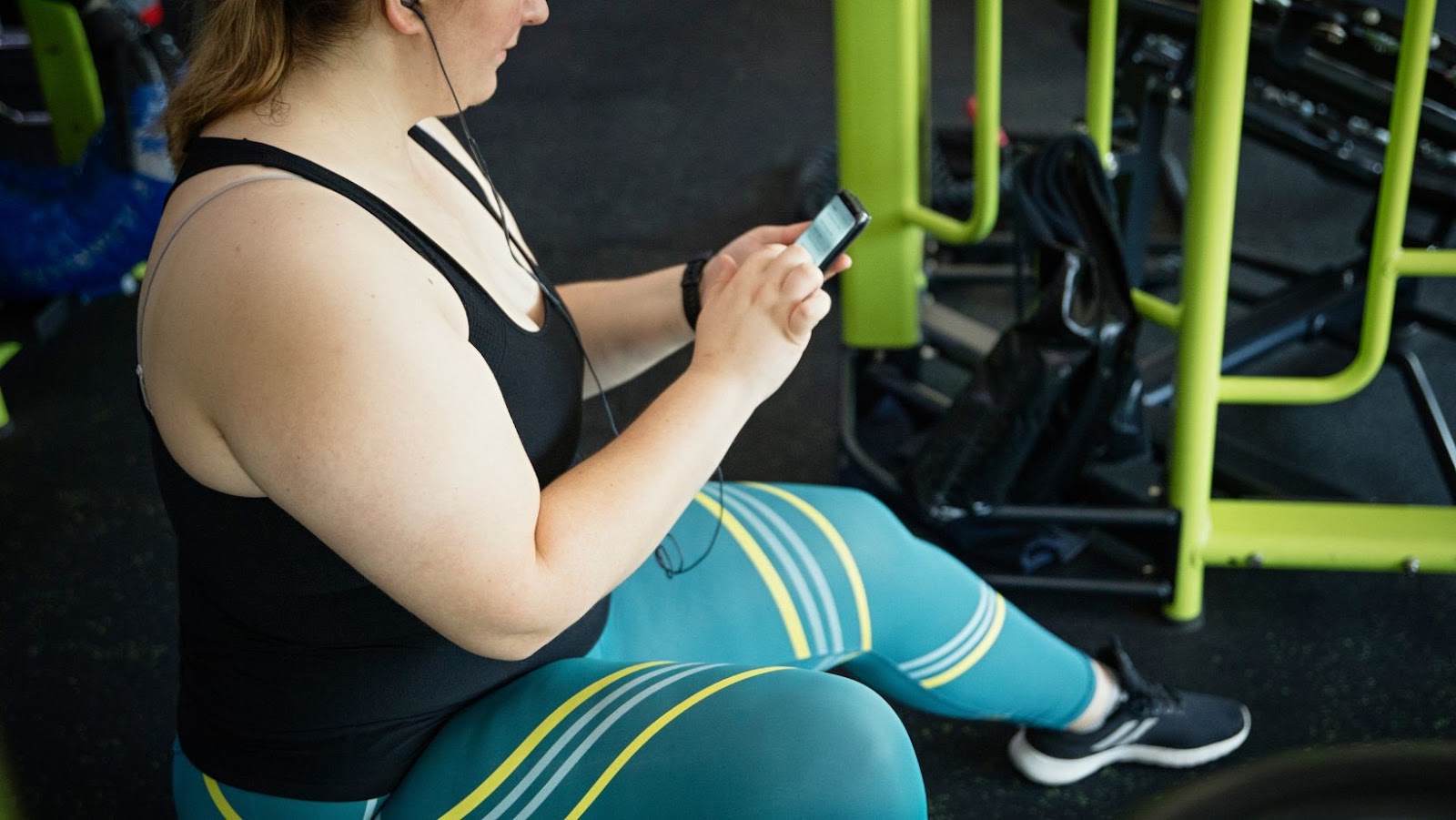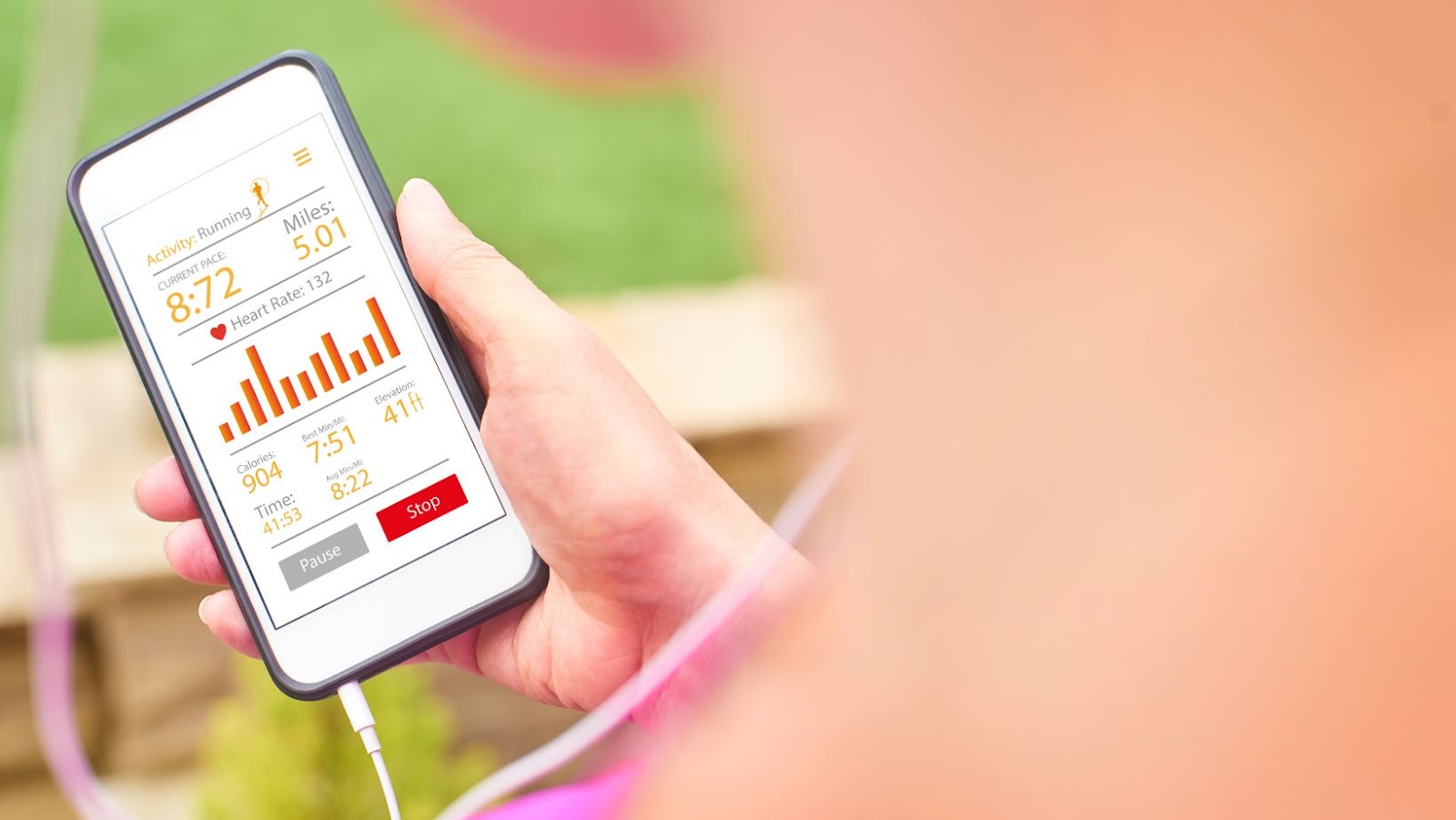
Lifesum and MyFitnessPal are both popular apps designed to help users track their daily food intake and exercise routine, but they have some key differences that set them apart.
Here Are the Key Differences Between Lifesum and MyFitnessPal:
- Focus: Lifesum focuses on achieving a balanced and healthy diet, while MyFitnessPal is more geared towards calorie counting and achieving weight loss goals.
- Design: Lifesum has a more modern and visually appealing design, while MyFitnessPal has a more cluttered layout.
- Features: Lifesum offers personalized meal plans, recipe ideas, and recommendations based on your personal goals, while MyFitnessPal offers a larger food database and more advanced exercise tracking features.
- Price: Lifesum has a free version with limited features and a premium version starting at $3.75 per month, while MyFitnessPal is free to use with the option to upgrade to premium for $9.99 per month.
Pro Tip: Evaluate your personal goals and priorities before choosing between Lifesum and MyFitnessPal to ensure you select the app that is best suited to your needs.
Lifesum vs MyFitnessPal
It’s important to compare and contrast the features of both Lifesum and MyFitnessPal in order to determine which one would be the best fit for you. Both apps offer some great features, but they also have some key differences. In this article, we will discuss the key differences between Lifesum and MyFitnessPal to help you make an informed decision.
Food Database and Barcode Scanner
Lifesum and MyFitnessPal offer some similar features, but there are key differences between the two when it comes to their food database and barcode scanner.
Lifesum’s food database is smaller than MyFitnessPal’s, but it focuses on high-quality, nutrient-dense foods. This makes it easier to find healthier options for your meals and snacks. MyFitnessPal, on the other hand, has a larger database but it includes more processed and fast-food options. Both apps have a barcode scanner feature to quickly log food items, but Lifesum’s scanner provides more detailed nutritional information for each item. It also allows you to save frequently used barcodes for even faster tracking. MyFitnessPal’s scanner is basic but allows you to add new foods to their database if they are not already included.
Ultimately, the choice between Lifesum and MyFitnessPal will depend on your specific needs and preferences. If you prioritize healthier food options and detailed nutritional information, Lifesum may be the better choice for you. If having access to a larger database and the ability to add custom foods is more important, MyFitnessPal may be the way to go.
Water Tracking and Meal Planning
Water tracking and meal planning are two essential features offered by popular health and fitness apps, Lifesum and MyFitnessPal. Although both apps aim to promote healthy living, there are some key differences between them regarding these features.
- Water Tracking: Lifesum allows you to quickly log your water intake in ounces or milliliters, set reminders to drink more water, and track your hydration level throughout the day. In comparison, MyFitnessPal offers basic water tracking, where you can only log how many glasses of water you drank for the day.
- Meal Planning: Lifesum offers personalized meal plans based on your goals, dietary preferences, and health conditions. It also features a barcode scanner to easily log food and create custom meals. MyFitnessPal offers a larger food database and allows you to track your calorie and nutrient intake. However, it doesn’t offer personalized meal plans like Lifesum does.
Depending on your goals and preferences, you can choose an app that meets your specific needs. For more personalized meal plans, Lifesum is a better option. For a larger food database and advanced nutrient tracking, MyFitnessPal is a better choice. Pro-tip: Experiment with both apps to find the one that aligns with your lifestyle and goal.
Exercise Tracking and Integration With Wearable Devices
When it comes to exercise tracking and integration with wearable devices, both Lifesum and MyFitnessPal offer features that can help you achieve your fitness goals. However, there are some key differences between the two apps that may influence your decision on which one to use.
Lifesum is a more holistic approach to health and fitness tracking. It not only allows you to log your exercise and food intake, but also your water intake, sleep patterns, and mental wellbeing. Additionally, Lifesum integrates with many popular wearable devices like Fitbit and Apple Watch, making it easy to track your progress on the go. MyFitnessPal, on the other hand, is primarily focused on tracking food intake and exercise. It has a large database of foods and exercises, which makes logging your daily meals and workouts easy. While it does integrate with many wearable devices, its features are not as robust as Lifesum’s.
Depending on your priorities, one app may be more suitable for you than the other. If you want a more comprehensive view of your overall health, Lifesum is the better option. However if you’re primarily interested in tracking your food and exercise, MyFitnessPal may be the way to go.
User Interface Comparison
When it comes to comparing Lifesum and MyFitnessPal, the first thing that comes to mind is the user interface. Both apps have bright, intuitive interfaces, but there are key differences between them. In this section, we’ll take a detailed look at the user interface for each app and explore the advantages and disadvantages of each.
App Navigation and User Experience
When it comes to app navigation and user experience, both Lifesum and MyFitnessPal offer intuitive user interfaces, but there are a few key differences between the two. Lifesum has a more streamlined, minimalist design that emphasizes its food tracking feature. The app uses a circular navigation menu at the bottom of the screen to access different sections of the app, making it easy to switch between food diaries, water intake tracking, and meal planning.
In comparison, MyFitnessPal has a more comprehensive user interface that includes not only food tracking, but also exercise tracking, social aspects, and additional features like barcode scanning. The navigation menu is located at the top of the screen and includes dropdown menus to access different sections of the app, such as a diary, progress tracking, and more. Ultimately, the choice between Lifesum and MyFitnessPal depends on personal preference and what features are most important to the user.
Customization and Personalization
Customization and personalization are fundamental features of any fitness app, including Lifesum and MyFitnessPal. However, Lifesum and MyFitnessPal differ in their user interface, which affects how users can customize and personalize their accounts.
MyFitnessPal offers a more comprehensive range of customization features than Lifesum, including the ability to set specific macronutrient goals, track water intake, and connect with other fitness apps and devices. In contrast, Lifesum prioritizes personalization and context-based recommendations, such as meal suggestions based on dietary goals and nutrient requirements. Lifesum’s interface is also more visually appealing, and its premium version offers more personalized meal plans and workout suggestions.
Ultimately, the choice between MyFitnessPal and Lifesum depends on your fitness goals and preferences. MyFitnessPal may be better suited for users who want more control over their macros and fitness data, while Lifesum may appeal to those who prioritize personalization and user experience.
Social Features and Community Support
When it comes to social features and community support, Lifesum and MyFitnessPal differ in several ways.
MyFitnessPal has a robust social community that allows users to add friends, share progress updates, and motivate each other through challenges and messages. It also has a feature that enables users to join or create groups that cater to their specific interests, such as vegans or runners. Additionally, MyFitnessPal has a forum where users can ask for advice or share their experiences with other members.
In contrast, Lifesum’s social features are more limited. It has a Friends feature that allows users to add friends, but it lacks the group and forum options that MyFitnessPal provides. However, Lifesum does have a “Lifesum Life” section where users can access articles, recipes, and tips related to health and wellness.
Whether you choose MyFitnessPal or Lifesum, both apps provide some level of social support to help you achieve your health goals.
Pricing and Subscription Comparison
When it comes to assessing the key differences between Lifesum and MyFitnessPal, it’s important to compare their respective pricing and subscription models. This comparison will help you choose a product that best suits your needs. In this section, we’ll discuss the pricing and subscription plans for both Lifesum and MyFitnessPal in detail.

Free Features and Premium Subscription
Lifesum and MyFitnessPal are two popular health and fitness apps that offer both free and premium subscription features. Here are the key differences between the free and premium versions of both apps:
Free Features:
MyFitnessPal offers a limited database of over 6 million foods and allows users to log their food, water, and exercise intake. Lifesum’s free version has a database of over 8 million foods, enables tracking for water and food intake, and provides users with macro tracking.
Premium Features:
MyFitnessPal’s premium version provides users with additional features such as meal planning, nutrition coaching, and personalized goals. Lifesum premium unlocks data-driven meal plans and customized workout plans, and it also integrates with brands such as Adidas and Google Fit.
The choice between these apps depends on specific user goals and preferences. While MyFitnessPal prioritizes calorie counting and weight loss, Lifesum focuses on overall health and wellbeing.
Pricing Comparison for Premium Plans
When considering a premium subscription for a health app, it is essential to compare pricing and features carefully. Here is a comparison of premium plans for Lifesum and MyFitnessPal to help you decide which one is best for you.
Lifesum:
Lifesum premium costs $9.99 per month or $30 per year. It offers additional features such as detailed nutritional information, individualized meal plans, and a library of healthy recipes. The premium subscription also syncs with fitness tracking apps like Fitbit and Google Fit.
MyFitnessPal:
MyFitnessPal premium costs $9.99 per month or $49.99 per year. It includes features such as advanced macronutrient tracking, customized goals and targets, and personalized insights and advice. The premium subscription also offers an ad-free experience and syncs with fitness tracking apps like Apple Health and Garmin.
Take the time to analyze the features and costs of each premium plan to find the best fit for your needs and budget.
Additional In-App Purchases and Advertisements
One key difference between Lifesum and MyFitnessPal is their approach towards additional in-app purchases and advertisements.
Lifesum provides both free and premium subscription options, with the premium subscription offering more extensive features, such as personalized meal plans and recipes, and access to exclusive content. While the free version of Lifesum does include ads, they are not intrusive, and users can still access many essential features without upgrading to the premium version.
MyFitnessPal also offers two subscription options – free and premium. However, their free version is ad-supported and includes several ads that can be disruptive to the user experience. Upgrading to the premium subscription removes these ads and provides extra features like micronutrient information and deeper insights. Unlike Lifesum, MyFitnessPal’s free version is more restrictive, with many features locked behind the premium paywall.
Choosing between the two will depend on your preference for ad-supported or ad-free options, willingness to pay for premium features, and individual fitness goals.
Pros and Cons of Using Lifesum
Lifesum is a popular health tracking app that allows users to set goals, track their diet and exercise, and keep track of their progress. But how does it compare to other popular health tracking apps such as MyFitnessPal? In this article, we’ll explore the pros and cons of using Lifesum compared to other health tracking apps.
Pros
Lifesum is an excellent nutrition and fitness tracking app that comes with a variety of benefits to help you achieve your health goals. Here are some of the pros of using Lifesum over MyFitnessPal:
- Personalized meal plans – Lifesum offers personalized meal plans based on your dietary needs, preferences, and fitness goals. This feature makes meal planning hassle-free.
- User-friendly interface – Lifesum features a sleek, modern interface that is easy to navigate, making it a user-friendly app for even beginners.
- Barcode scanner – The Lifesum app includes a barcode scanner that reads nutrition information from packaged foods and records it accurately in your food diary.
- Integration with fitness trackers – Lifesum supports integration with popular fitness trackers like Fitbit and Apple Watch, making it easy for you to track your activity and food intake in one app.
- Habit tracking – Lifesum lets you track your habits like water intake and meal intake, which can aid in habit formation and make tracking easier.
Pro Tip: While Lifesum and MyFitnessPal are both great apps, it’s essential to choose one that best aligns with your health goals and preferences.
Intuitive Interface
One of the key benefits of using Lifesum is its intuitive interface, which makes it easy to track your meals and exercise routines.
Pros:
- Clean and user-friendly interface that makes it easy to navigate the app and find what you need quickly
- Food diary with a wide range of meal options, including vegetarian, vegan, and gluten-free to accommodate different dietary needs
- Barcode scanner feature to easily input packaged products and their nutritional information
- Water intake tracker that reminds you to stay hydrated throughout the day
- Integration with various fitness apps and wearable devices to track your exercise routine and progress
Cons:
- Some essential features are only available in the premium version of the app, which requires a monthly or yearly subscription fee
- Not as extensive a database of foods as some other nutrition tracking apps like MyFitnessPal
- Limited customization options for users who want to set specific macro or calorie goals
- The app sometimes requires manual input of certain meals, which can be time-consuming
Overall, the intuitive interface of Lifesum makes it a great option for beginners or those looking for a user-friendly app to track their nutrition and fitness progress.
Nutritional and Macro Breakdown
Nutritional and macro breakdown is a valuable feature offered by Lifesum, which allows you to track and balance your daily nutrient intake. Here is the macro breakdown of Lifesum:
Protein: 20%
Fat: 40%
Carbohydrates: 40%
Lifesum also provides detailed nutritional information, including calories, vitamins, and minerals, for thousands of foods and drinks.
Pros and Cons of Lifesum Include:
Pros:
- Personalized meal recommendations
- Wide range of diets to choose from
- Integration with fitness trackers
- Simple and user-friendly interface
Cons:
- Premium version required to access all features
- Limited food database compared to MyFitnessPal
- Expensive premium subscription
- Less accurate scanning feature compared to MyFitnessPal
Overall, Lifesum is a great tool for tracking your nutrition and balancing your macro breakdown, but it may not be the best option for those on a tight budget.
Recipe Suggestions and Meal Plans
Lifesum is a popular app that helps users track their diet and fitness goals. Here are some pros and cons of using Lifesum and the key differences between Lifesum and MyFitnessPal, another popular app in this category.
Pros of using Lifesum:
- Provides personalized meal plans and recipes based on your dietary preferences and goals.
- Tracks your water intake and helps you stay hydrated throughout the day.
- Offers a library of healthy recipes with step-by-step instructions and cooking tips.
Cons of using Lifesum:
- The free version is limited in its features, and the premium version can be expensive.
- The barcode scanner feature for tracking food intake can be inaccurate.
- The app can be complex to navigate and overwhelming for beginners.
Key Differences Between Lifesum and MyFitnessPal:
- Lifesum offers personalized meal plans and recipes based on your dietary preferences and goals, while MyFitnessPal mainly tracks food and calorie intake.
- Lifesum has a cleaner and more user-friendly interface, whereas MyFitnessPal has more detailed features and settings.
- Lifesum focuses more on healthy eating and lifestyle choices, while MyFitnessPal allows for more flexibility in tracking any type of food intake.
Try Lifesum if you need guidance on meal plans, recipes, and healthy eating, but be aware of the limitations of the free version and potential inaccuracies of the food tracking feature. If you prefer a more detailed approach to tracking your diet and fitness goals, MyFitnessPal may be a better fit for you.
Cons
While Lifesum has many benefits for users who want a comprehensive approach to health and wellness, there are some cons to consider before deciding to use it.
Cons:
1. Limited food database: Lifesum’s database does not have as many food options as similar apps, which can make it difficult to track some meals and snacks accurately.
2. Expensive paid version: While Lifesum offers a free version, its premium version can be quite pricey, which may not be worth it for some users.
3. Glitchy tracking: Some users report that the app’s tracking features, such as logging meals and exercise, can be glitchy and unreliable at times.
That being said, Lifesum still remains a popular choice among users who want to track their food, exercise, and overall health in one place, and may be a good alternative to users who are not satisfied with MyFitnessPal’s features.
Limited Free Features
Lifesum is a popular health and fitness app that offers both free and paid features. The free features offered by Lifesum are limited but can still be useful for those who are just starting their health and fitness journey.
Pros of using the free version of Lifesum include access to a food diary, water intake tracker, and recipe suggestions. Additionally, the app offers a personalized daily calorie budget based on your goals and preferences. However, there are also some cons to using the free version of Lifesum. For example, the food database is not as extensive as some other apps, and the barcode scanner feature is only available in the paid version. Additionally, some users have reported that the app can be glitchy or slow to load.
Overall, if you are looking for a basic health and fitness app to track your meals and water intake, Lifesum’s free features may be sufficient. However, if you require more advanced features like a barcode scanner or access to a larger food database, it may be worth upgrading to the paid version or exploring other options like MyFitnessPal, which offers a more comprehensive free version.

Less Accurate Food Database
Lifesum has a less accurate food database compared to MyFitnessPal, but it has its advantages and disadvantages when compared to other similar health and fitness apps.
Pros of using Lifesum:
- Lifesum offers personalized meal plans that keep changing based on the user’s feedback and preferences.
- It has a wide range of healthy and delicious recipe collections that cater to different dietary needs.
- The in-app water tracker encourages users to drink enough water throughout the day, which is vital for maintaining good health.
Cons of using Lifesum:
- Lifesum has a less comprehensive food database as compared to MyFitnessPal, making it difficult to log certain foods accurately.
- The free version of the app has very limited features, and the premium version can be pricey.
Pro tip: Before choosing a health and fitness app, determine which features are essential to you and try out various options to pick one that works best for you.
Expensive Premium Plans
Lifesum offers 3 premium plans, which are costly compared to other food and nutrition tracking apps. The plans offer additional features to the free version, including personalized meal plans, recipes, and calculated macronutrient intake. The three plans are as follows:
1. 3-month Premium subscription: $21.99, billed every 3 months
2. 6-month Premium subscription: $29.99, billed every 6 months
3. 12-month Premium subscription: $44.99, billed annually
Pros:
1. Access to personalized meal plans tailored to your dietary needs and goals.
2. Recipes and meal ideas to keep your diet varied and interesting.
3. Calculated macronutrient intake to ensure your diet aligns with your fitness goals.
Cons:
1. Expensive compared to similar apps, which offer similar features for free or at lower costs.
2. Some users may find the meal plans and recipes limiting, especially if they have specific dietary requirements or preferences.
3. The app may be overwhelming for beginners or those new to nutrition tracking.
Key Differences Between Lifesum and MyFitnessPal:
1. Lifesum offers personalized meal plans, while MyFitnessPal provides a food diary and macro tracking system.
2. Lifesum features recipes and meal ideas, while MyFitnessPal has a broader database of foods.
3. Lifesum’s interface is sleeker and more visually appealing, while MyFitnessPal is more functional and straightforward.
Pro Tip: Research and compare features between apps to choose the one that best aligns with your goals and preferences.
Pros and Cons of Using MyFitnessPal
MyFitnessPal is one of the most popular calorie tracking apps on the market and can be an effective way to keep track of your calorie intake and reach your fitness goals. But is it the right choice for you? There are some key differences between MyFitnessPal and Lifesum that you should consider before making a final decision. In this article, we will explore the pros and cons of using MyFitnessPal.
Pros
MyFitnessPal is a popular fitness app that offers several benefits for its users. Here are some of the pros of using MyFitnessPal:
- User-friendly interface: MyFitnessPal is easy to use, with a simple and intuitive interface.
- Large food database: The app has over 11 million foods listed, making it easy for users to track their meals accurately.
- Barcode scanner: MyFitnessPal allows users to scan barcodes on products for quick and easy input of nutritional information.
- Goal setting: The app helps users set goals for their daily calorie and macronutrient intake, based on their unique needs.
- Syncs with other fitness apps: MyFitnessPal can sync with other fitness apps, such as Fitbit and Apple Health, to provide a comprehensive overview of a user’s fitness journey.
While MyFitnessPal has several advantages, it’s important to weigh the cons as well before deciding if it’s the right app for you.
Vast Food Database
One of the primary advantages of MyFitnessPal is its vast food database that allows users to log any meal or snack with a simple search. However, this convenience can also have some downsides.
Pros:
1. MyFitnessPal has an extensive database of over 11 million different foods, making it easy for users to track their meals accurately.
2. The app allows users to scan barcodes on packaged foods, saving time and ensuring accuracy.
3. MyFitnessPal has a large and engaged community that shares recipes, tips, and encouragement.
Cons:
1. Not all foods are created equal, and the app doesn’t always distinguish between processed or whole foods, making it difficult to make healthy choices.
2. The calorie and macronutrient goals provided by the app may not be accurate for everyone, leading to over or under-eating.
3. The app can be addictive, leading to obsessive tracking and an unhealthy relationship with food.
Key Differences Between Lifesum and MyFitnessPal:
1. Lifesum emphasizes a holistic approach to health and wellness, focusing not just on calories but on the quality of food and exercise habits.
2. MyFitnessPal is more straightforward in terms of tracking calorie intake and macros and has a larger food database.
Ultimately, the choice between the two apps comes down to personal preference and goals.
Pro tip – While using fitness apps such as MyFitnessPal, it’s important to remember that they are only tools to help you reach your health and fitness goals, and not strict rules to live by.
Nutrient and Macro Breakdown
MyFitnessPal is a popular app used to track nutrient and macro breakdown in your meals. While this app can be very useful for people trying to lose weight or maintain a healthy lifestyle, there are some pros and cons to consider before using it.
Pros:
- MyFitnessPal has a large database of food items with their nutrient and macro breakdown, making it easy to track your daily intake.
- This app allows you to set personalized goals based on your age, weight, height, and activity level.
- You can track your water intake and exercise routine in addition to your diet.
Cons:
- MyFitnessPal can be time-consuming to use if you cook at home, as you need to input all of the ingredients in each recipe manually.
- This app can create an unhealthy obsession with calorie counting and lead to disordered eating habits.
- While MyFitnessPal can give you a general idea of your nutrient and macro breakdown, it is not always accurate and may not take into account seasonal and regional variations in food quality.
Key Differences Between Lifesum and MyFitnessPal:
Lifesum focuses on providing personalized meal plans and nutrition advice based on your goals and preferences, while MyFitnessPal is solely focused on tracking your daily intake. Lifesum also offers additional features such as mindful eating exercises and access to a nutritionist. Ultimately, the choice between these apps will depend on your personal preferences and goals.
Free Features and Affordable Premium Plans
MyFitnessPal offers three free features for users: calorie, nutrient, and macro tracking. The premium plans come with additional features, including advanced tracking tools, personalized insights, and no ads.
Pros of using MyFitnessPal include that it is user-friendly, syncs with a variety of fitness apps and wearables, and offers a large database of foods and drinks. It allows users to set custom nutrition goals, track their progress, and connect with friends and like-minded users for accountability and support. Cons of using MyFitnessPal include that some users find the calorie goals and nutrient ratios to be unrealistic or difficult to achieve. The free version is also limited in terms of the number of food entries and nutrient goals, while the premium version can be expensive.
Key differences between Lifesum and MyFitnessPal include Lifesum’s focus on the quality of the calories consumed, rather than just the quantity. Lifesum also offers personalized meal plans and nutrition advice, while MyFitnessPal primarily relies on user input for goal-setting and progress tracking. Pro tip: Try out different apps and see which one works best for your lifestyle and goals.
Cons
While MyFitnessPal is a popular app for tracking food intake, exercise, and overall health, it also has some cons to consider before using it.
Cons of using MyFitnessPal include:
- Inaccuracy: User-entered data can be unreliable and lead to inaccurate tracking.
- Obsessiveness: Constantly tracking and counting calories can lead to an unhealthy obsession with food and fitness.
- Limited nutritional information: While MyFitnessPal provides some nutritional information, it may not be comprehensive enough for those with unique dietary needs.
- Privacy concerns: Some users have reported concerns with their personal data being shared with third-party companies.
Despite these cons, MyFitnessPal can still be a useful tool for managing health and fitness goals. It’s important to weigh the pros and cons and decide if it’s the right tool for you. Alternatively, Lifesum is another popular app that offers more comprehensive nutritional information and personalized meal plans, making it a great alternative to MyFitnessPal.
Complicated Interface
One of the cons of using MyFitnessPal is its complicated interface, which can be overwhelming for new users. However, once you get the hang of it, the app offers a plethora of features that can help you achieve your health and fitness goals.
Here are some of the pros and cons of using MyFitnessPal compared to Lifesum:
Pros:
- MyFitnessPal has a larger food database with more accurate nutrient information.
- The app tracks multiple macros and micronutrients, making it ideal for users with specific dietary needs.
- MyFitnessPal offers a barcode scanner feature that allows you to easily log packaged foods.
Cons:
- The interface can be complicated and overwhelming for new users.
- The free version of the app has limited features and may require a premium subscription for full access.
- MyFitnessPal does not offer any personalized meal plans or recipes like Lifesum does.
Ultimately, the choice between MyFitnessPal and Lifesum comes down to personal preference and specific health goals. It’s important to assess the features and limitations of each app before deciding which one to use.
Frequent Advertisements
One common complaint about MyFitnessPal is its frequent advertisements, which can disrupt the user experience. However, despite this issue, MyFitnessPal still offers many benefits for those looking to track their food intake and manage their health.
Pros of Using MyFitnessPal:
MyFitnessPal has a vast database of foods, with over six million entries, making it easy to track calorie intake and macronutrient breakdown. The app offers a barcode scanner to quickly log packaged food items, and users can connect with friends for extra motivation and support.
Cons of Using MyFitnessPal:
The free version of the app contains frequent advertisements, making it challenging to navigate and potentially leading to an overall negative experience.
Key Differences Between Lifesum and MyFitnessPal:
Lifesum offers a more visually appealing interface while MyFitnessPal has a broader food database. While Lifesum has a broader range of diet plans to choose from, MyFitnessPal offers more features for free, such as the ability to track macronutrient intake and connect with friends. Ultimately, the choice between the two will come down to personal preference and the specific needs of each user.
Pro tip: Consider trying both MyFitnessPal and Lifesum to determine which app best suits your lifestyle and health goals.
Limited Social Features and Community Support
One of the drawbacks of using MyFitnessPal is the limited social features and community support it offers. While the app allows you to add friends and share your progress with them, there are minimal ways to interact and engage with others on the platform. As a result, it can be easy to feel like you’re on your fitness journey alone.
On the flip side, the lack of social features can be seen as a pro for some users who prefer to focus solely on their personal progress without the distraction of notifications, messages, and news feeds. In comparison, Lifesum offers a more robust community feature, allowing users to join groups, receive feedback from other users, and participate in challenges together. Ultimately, the decision between MyFitnessPal and Lifesum comes down to personal preference and which features are most important to your fitness journey.










